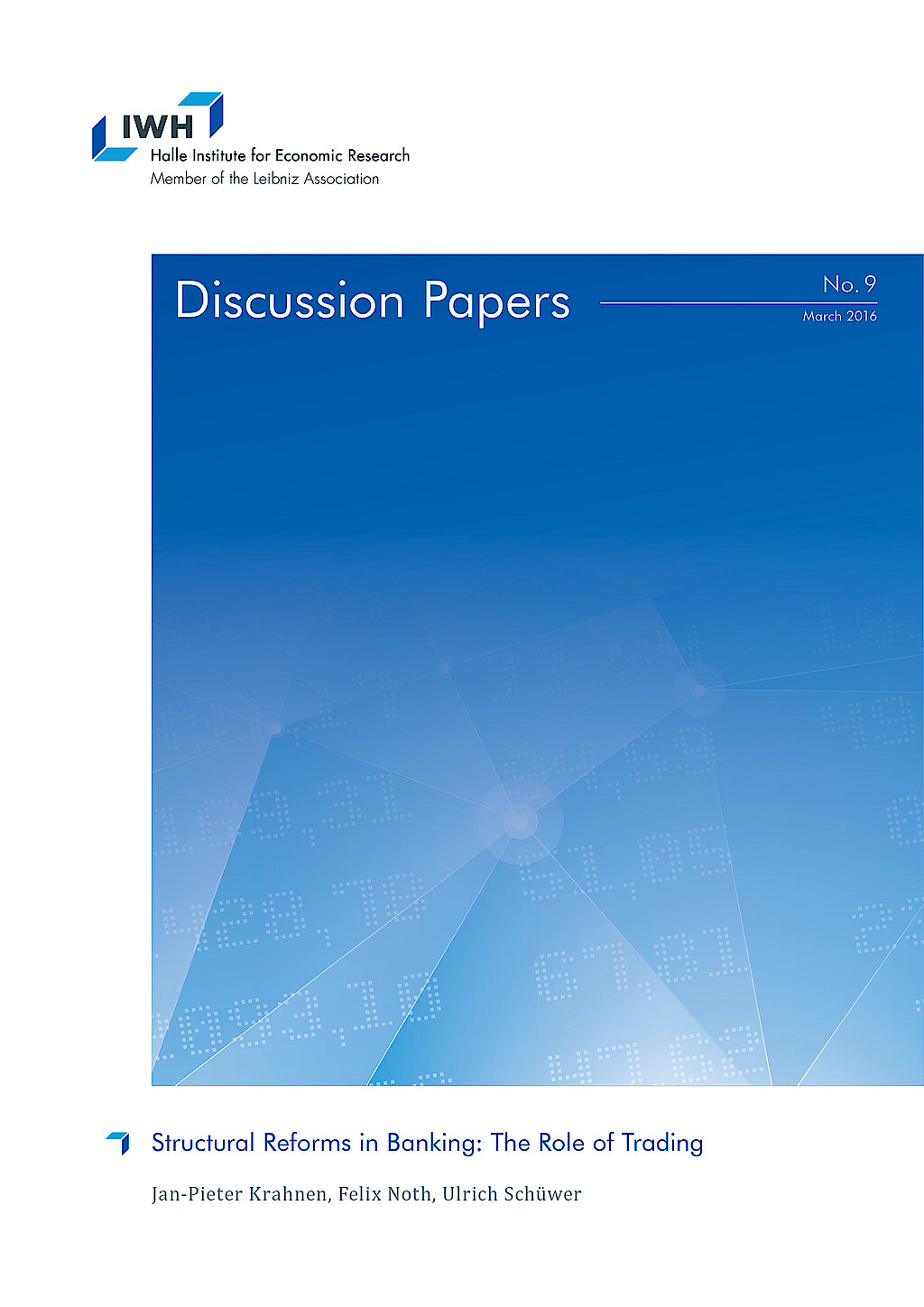
Structural Reforms in Banking: The Role of Trading
In the wake of the recent financial crisis, significant regulatory actions have been taken aimed at limiting risks emanating from trading in bank business models. Prominent reform proposals are the Volcker Rule in the U.S., the Vickers Report in the UK, and, based on the Liikanen proposal, the Barnier proposal in the EU. A major element of these reforms is to separate “classical” commercial banking activities from securities trading activities, notably from proprietary trading. While the reforms are at different stages of implementation, there is a strong ongoing discussion on what possible economic consequences are to be expected. The goal of this paper is to look at the alternative approaches of these reform proposals and to assess their likely consequences for bank business models, risk-taking and financial stability. Our conclusions can be summarized as follows: First, the focus on a prohibition of only proprietary trading, as envisaged in the current EU proposal, is inadequate. It does not necessarily reduce risk-taking and it likely crowds out desired trading activities, thereby negatively affecting financial stability. Second, there is potentially a better solution to limit excessive trading risk at banks in terms of potential welfare consequences: Trading separation into legally distinct or ring-fenced entities within the existing banking organizations. This kind of separation limits cross-subsidies between banking and proprietary trading and diminishes contagion risk, while still allowing for synergies across banking, non-proprietary trading and proprietary trading.






